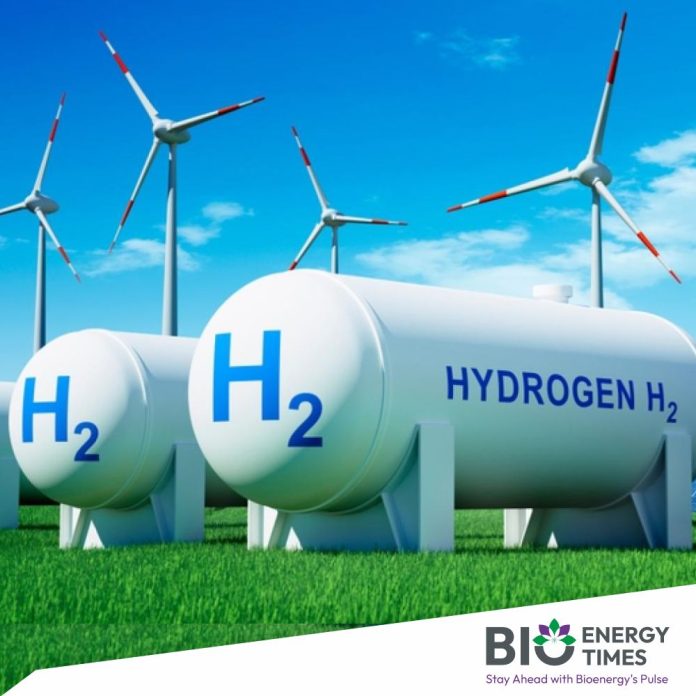Mumbai: Belgium-based industrial giant John Cockerill is significantly expanding its presence in India with plans to double its electrolyzer production capacity and ramp up operations in clean energy, defense manufacturing, steel decarbonization, and nuclear servicing, reports The Economic Times.
Vivek Bhide, the company’s Regional President for India and Group Transformation Officer, said that India will play a central role in John Cockerill’s global green hydrogen business. The company plans to increase its electrolyzer manufacturing capacity in India from 1 GW to 2 GW by 2029. This is part of a joint venture with AM Green (formerly Greenko) based in Kakinada, Andhra Pradesh. The initial 1 GW line is expected to be operational by 2026. The company has already secured a government production-linked incentive (PLI) for 300 MW of annual capacity and is confident the facility will be fully booked for several years, thanks to strong early demand.
John Cockerill will use pressurized alkaline electrolyzer technology tailored for industrial-scale operations. AM Green will serve as the anchor customer, using the electrolyzers to produce green ammonia and methanol. With India aiming to build 12–14 GW of electrolyzer capacity by 2030 to meet its 5 million metric tonne green hydrogen target, Bhide said John Cockerill expects to supply at least 2 GW, or 15 percent, of the total.
While markets in the US and Europe are slowing due to subsidy uncertainty and delays in offtake agreements, Bhide said India has emerged as a more reliable and stable growth engine for green hydrogen. The company is also building a large engineering and operations team in India to lead much of the technological development.
In addition to green hydrogen, the company is actively pursuing opportunities in steel and defense. Bhide said John Cockerill is developing low-emission steel processing technologies compatible with green hydrogen to align with India’s ambitions to expand its steelmaking capacity to 300 million tonnes per annum by 2030 and 500 million tonnes by 2047. The company already manufactures components at two sites in India and is investing in engineering and project management teams to support these goals.
On the defense front, John Cockerill is working with Larsen & Toubro (L&T) to develop 25-tonne light tanks equipped with 105mm turrets for use in high-altitude regions like Ladakh, where heavier tanks cannot be deployed. The prototype is currently undergoing testing, and full-scale production is expected to begin following successful trials this summer. Bhide said the company is committed to localizing the production and supply chain to ensure relevance in the Indian market.
In clean energy, the company is pushing forward with modular concentrated solar power (CSP) systems designed to offer round-the-clock renewable energy through thermal energy storage. Although there are only a handful of large-scale CSP projects globally, John Cockerill is focusing on developing smaller, modular CSP systems suitable for India. The company has signed a memorandum of understanding with L&T to build a cost-effective supply chain and is awaiting a major CSP tender from NTPC expected in the third quarter of 2025.
On the nuclear front, the company plans to offer servicing and maintenance support for India’s growing nuclear energy sector. With the country aiming to reach 100 GW of nuclear capacity, including around 10 small modular reactors (SMRs), Bhide said John Cockerill is positioning itself to play a key role. The company already services most nuclear plants in Europe and plans to offer similar services in India, focusing on operations and maintenance, diagnostics, and reliability engineering.
Despite the government’s strong push for green energy, Bhide acknowledged that investor confidence in hydrogen, CSP, and nuclear remains cautious due to a lack of clear demand signals. He emphasized the need for policies and financing mechanisms that support first movers and encourage long-term investment, particularly in sectors like steel and refining that are difficult to decarbonize.
He urged policymakers to shift the focus from the cost per kilowatt-hour to broader integration and decarbonization strategies. Bhide concluded that while India has laid a solid foundation, what is now needed is consistent execution, clearer demand visibility, and the will to move forward quickly.
“India’s mix of policy ambition, industrial demand, and cost sensitivity makes it a prime market for clean energy,” he said. “But to realize that potential, we need the right support from both government and industry.”
















